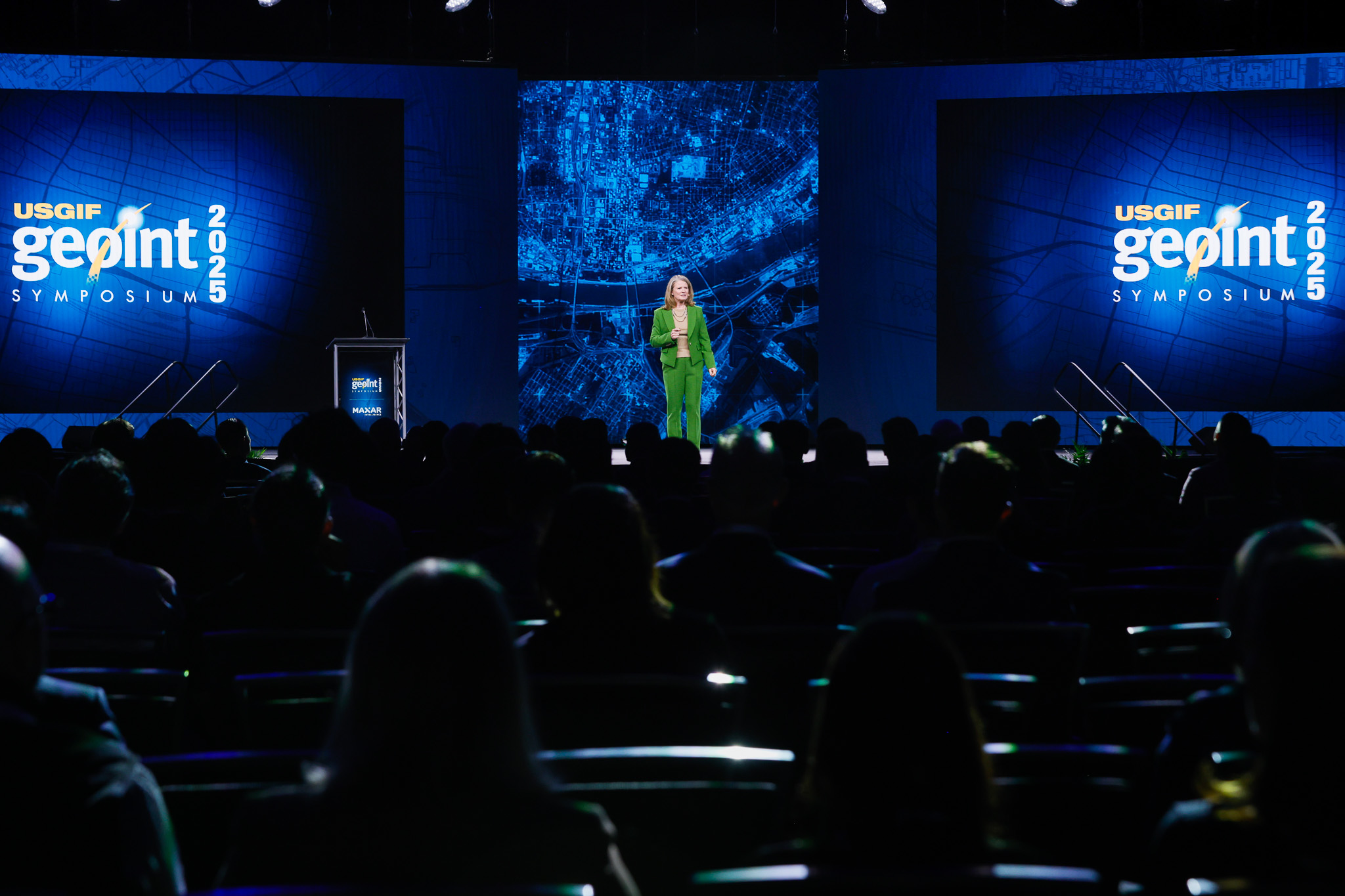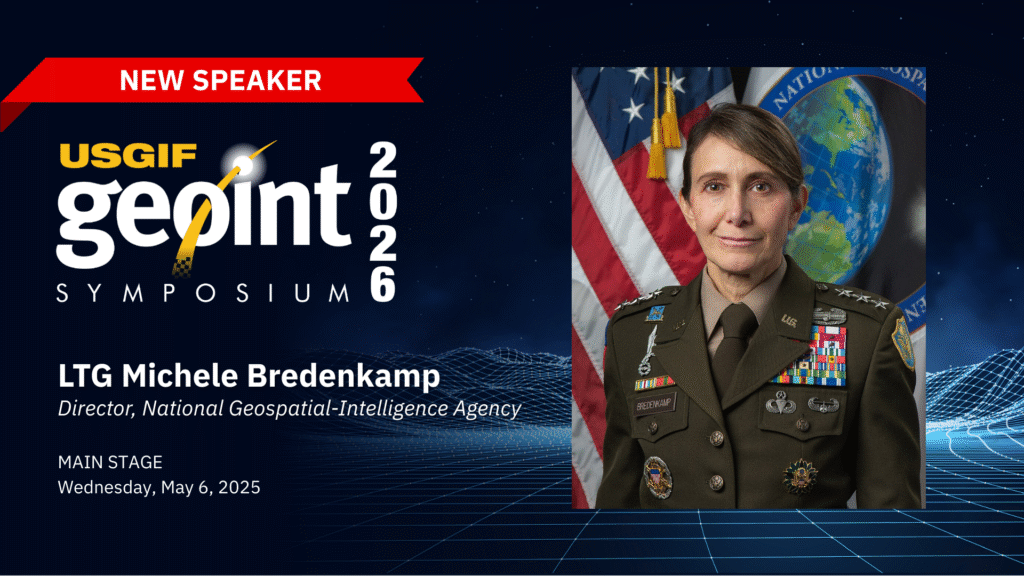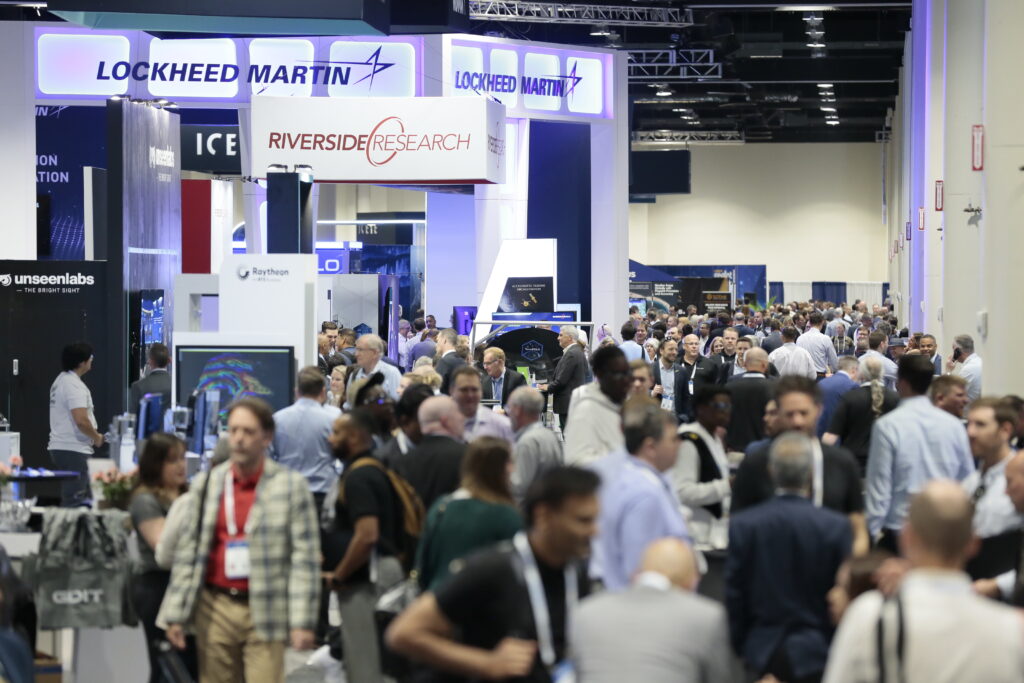Innovation, Integration, and Global Security
The critical intersection of innovation, collaboration, and capacity building to address the evolving challenges of modern security emerged as the main theme in keynote remarks and panel discussions on the first day of the 2025 GEOINT Symposium in St. Louis, MO. From workforce development to technological advancements in commercial and governmental collaboration, the program highlighted that geospatial intelligence is about gathering and analyzing data and empowering decision-makers with timely, integrated information to ensure security and preparedness for the future.
USGIF CEO Ronda Schrenk and Robert Cardillo, chairman of the USGIF Board of Directors, set the tone by providing several recent examples of the GEOINT community’s accomplishments that illustrated how the community is building a secure tomorrow together.
“The challenges we face today aren’t static,” Cardillo noted. “They’re accelerating, converging, and becoming more interconnected — whether in global security, climate resilience, or digital trust. To combat that network of threats, we must create a network of solutions.”
NATO’s Strategic Security: GEOINT’s Vital Role
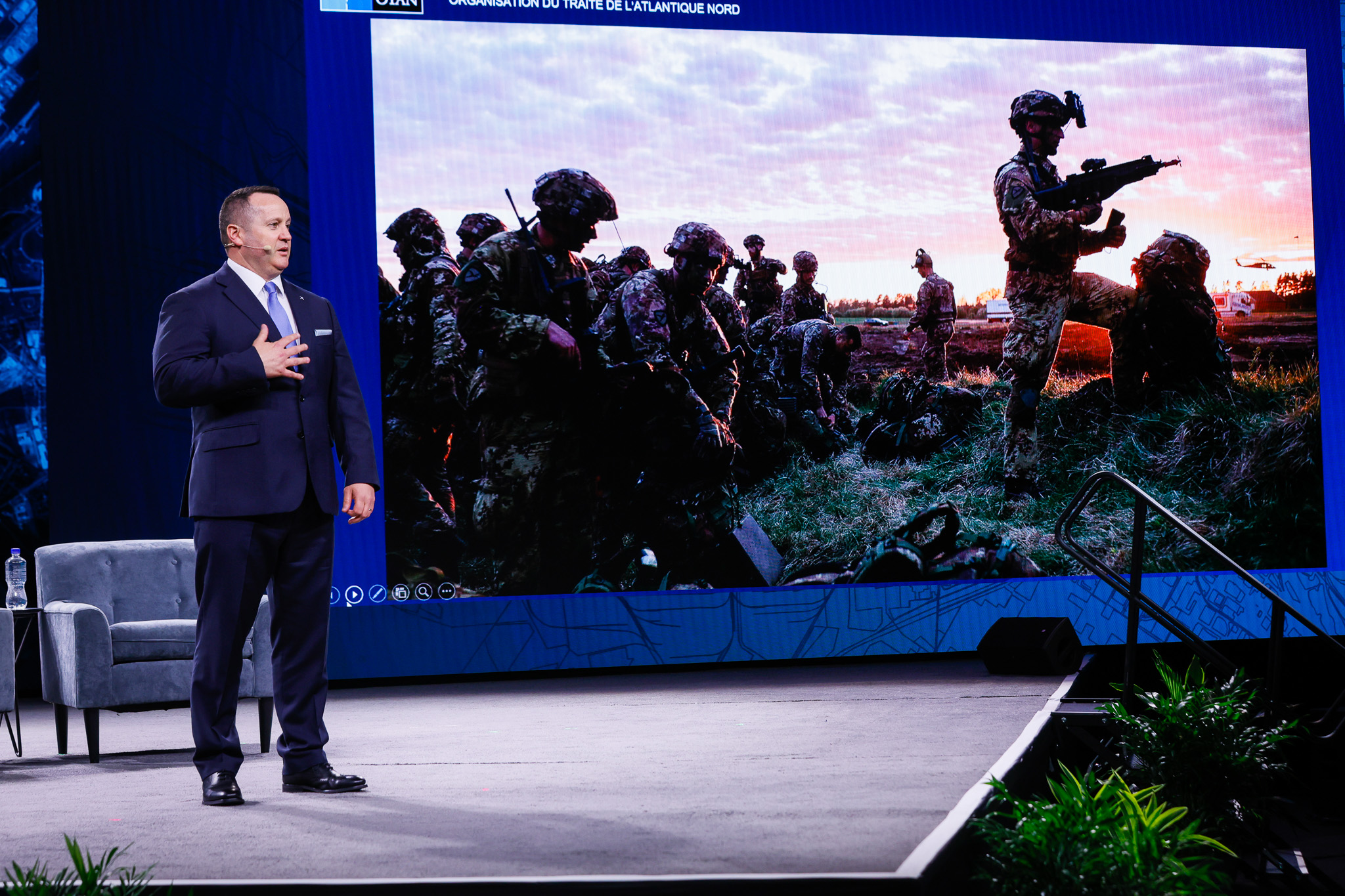
The first keynote speech of the day provided ample evidence of why such a network is critical for global security. Major General Paul Lynch, NATO Deputy Assistant Secretary General for Intelligence, emphasized the pivotal role of GEOINT in the Alliance’s strategic operations and how intelligence integration and information sharing are essential for collective defense against modern threats, including hybrid warfare and technological advancements. His speech focused on the importance of multinational cooperation in safeguarding security in a rapidly changing global landscape.
“GEOINT aims to provide us with a way to fuse huge amounts of data into integrated systems and work out linkages that previously remained hidden, to give unique insights across domains and help deliver a comprehensive intelligence picture at or before the point of decision,” General Lynch observed.
“This is critical for NATO’s decision makers to enable them to make the best decisions – or the least worst decisions.”
“Our collective security faces challenges and threats from a disturbingly broad range of adversaries and competitors,” he noted. “It is clear that the most significant and direct of these threats comes from Russia, and this will persist into the long term.”
“For over three years, war has raged in eastern Europe and there are concerns about how it will end,” General Lynch continued. “Having ramped up his defense industry, Putin’s war machine rumbles on, supported by Chinese technology,
Iranian drones and North Korean troops and missiles, all at huge cost in blood and treasure. Not least in Ukraine, our collective security is being increasingly challenged by those who want to replace the global order with chaos and coercion and promote the rule of force over the rule of law. We cannot and must not let this happen.”
GEOINT Powers National Security, Regional Innovation
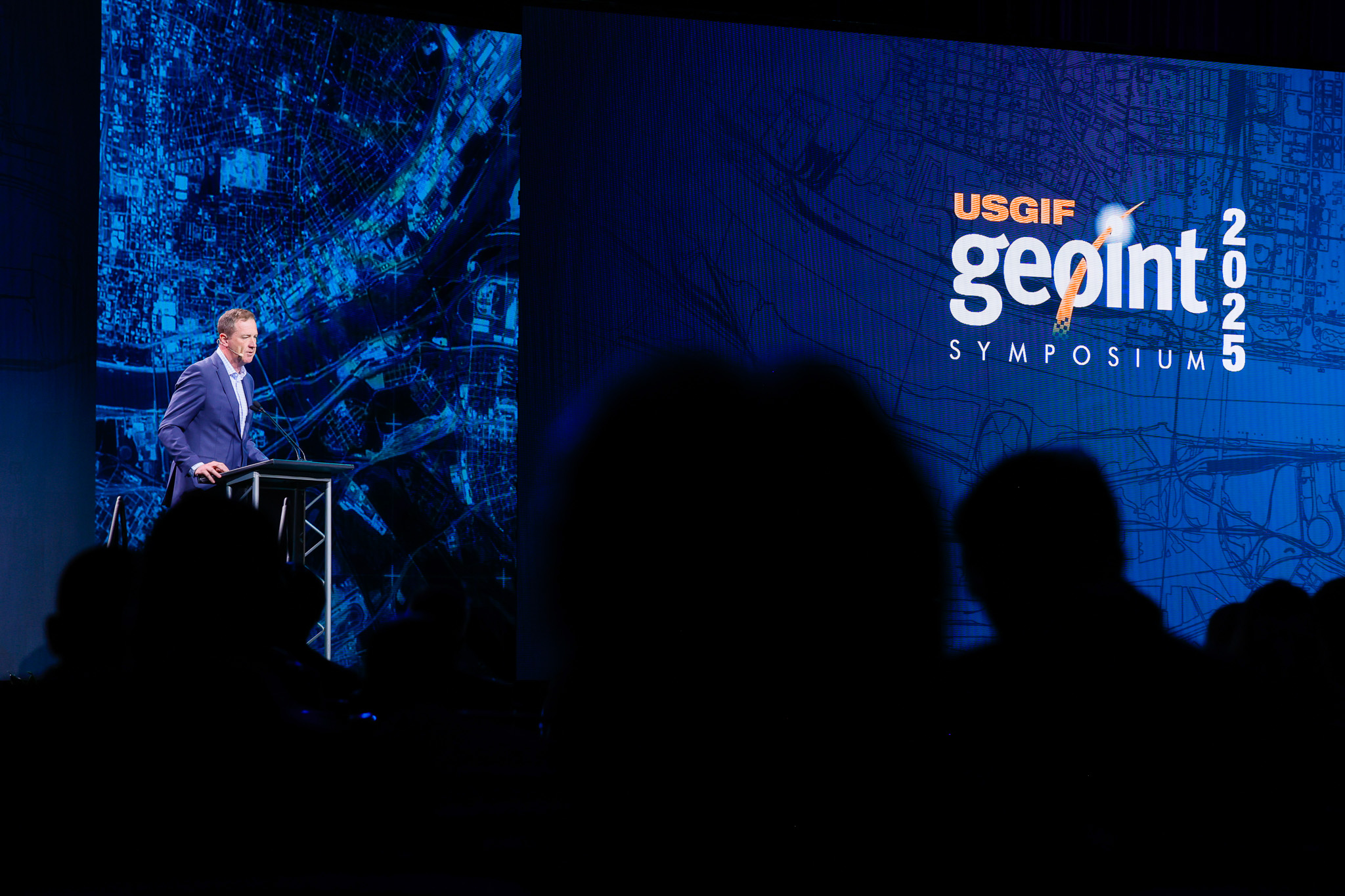
U.S. Senator Eric Schmitt (R-MO), the day’s second keynote speaker, underscored how GEOINT has become crucial in maintaining national security, particularly in great power competition with nations like China and Russia. He also highlighted the growing role of Missouri as a hub for geospatial innovation, showcasing the intersection of government, academia, and the private sector in advancing GEOINT capabilities.
“Geospatial intelligence is no longer a support function, it’s a frontline enabler of national power,” Senator Schmitt noted. “Work from folks like you protects warfighters, informs Combatant Commanders, and allows us to see first — so we can act first.”
Schmitt said he was “especially proud that St. Louis is quickly becoming the center of this revolution. With the opening of NGA West’s new campus in North St. Louis, we are building more than a headquarters — we are building the geospatial epicenter of the country.”
He also pointed to the concentration of GEOINT talent and resources in the region’s commercial and academic sectors, which are pioneering research in the field. “And they’re doing it right here in Missouri,” he added. “This proves what we’ve always believed: You don’t need a Silicon Valley zip code to change the world.”
Investing in Future Workforce Development
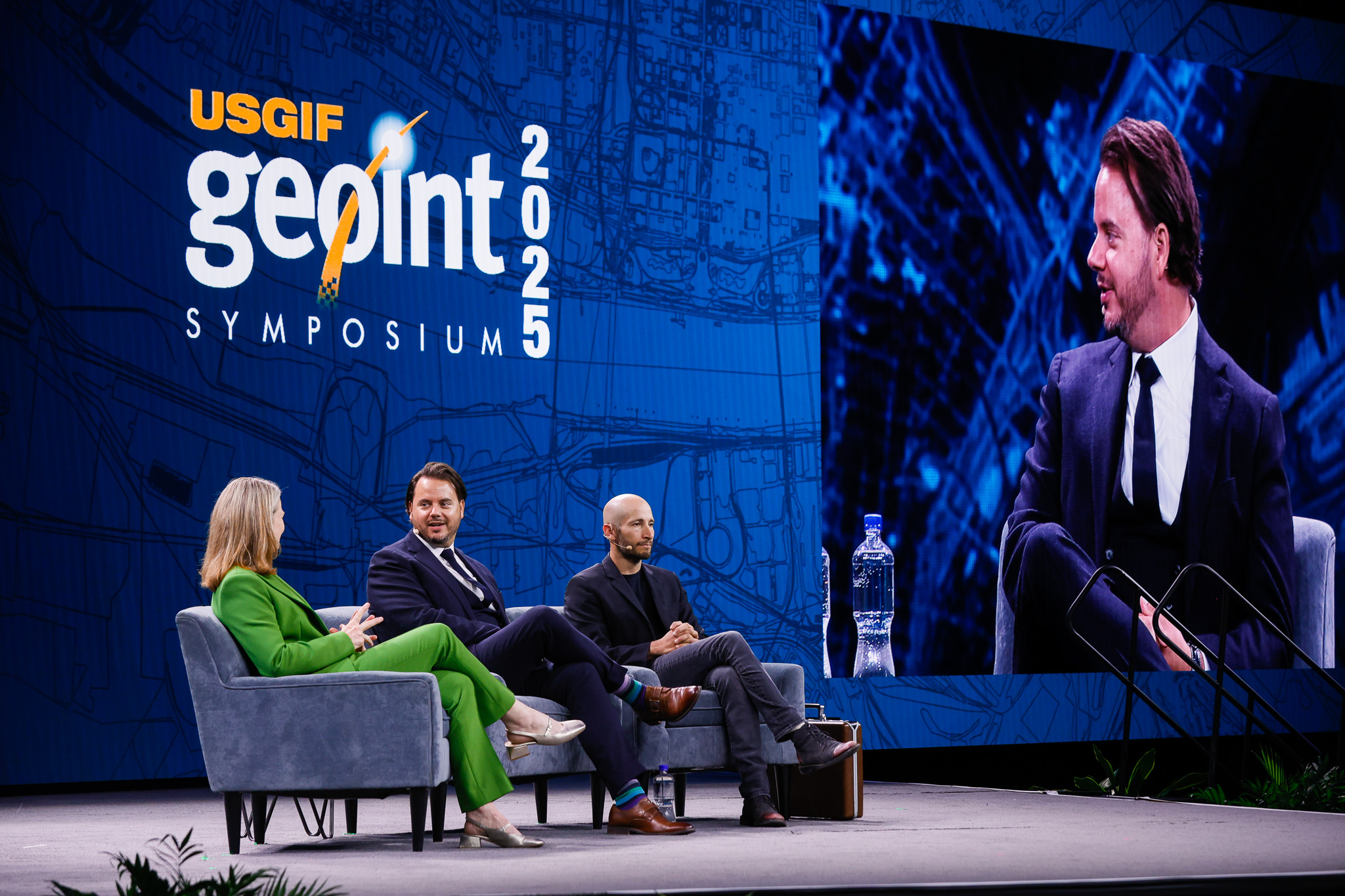
Formative early-career experience in GEOINT was the focus of the day’s first panel discussion, which featured accomplished alumni of USGIF’s Golden Ticket program who are now serving in executive roles.
They explored the importance of investing in young talent and workforce development within the GEOINT community. They discussed how the next generation of GEOINT professionals is crucial for national security, reinforcing the theme that building capacity and expertise is key to ensuring a secure future.
Michael Grochol, Chief Executive Officer of Iron EagleX, a General Dynamics Information Technology Company, said his Golden Ticket experience in 2011 helped establish professional relationships from which he continues to learn. His advice to people at all stages in the GEOINT field:
“Whether you’re a young professional or someone who’s been in the industry for a while, your ability to build a longstanding, trusted relationship … is really going to drive your career forward, because people are going to be able to know that they can trust you.”
Shay Har-Noy, Chief Executive Officer of Edgybees, similarly felt that his career has centered on the people with whom he has developed professional ties, starting with his Golden Ticket experience. “The thing that I’ve learned the most is that people matter,” he observed. “The thing I’m most proud of in my career isn’t the line of code you wrote, or that clever algorithm your team developed, but the fact that you all work together, fighting like hell to make sure the mission is successful.”
Commercial Space Innovation Drives Advancement
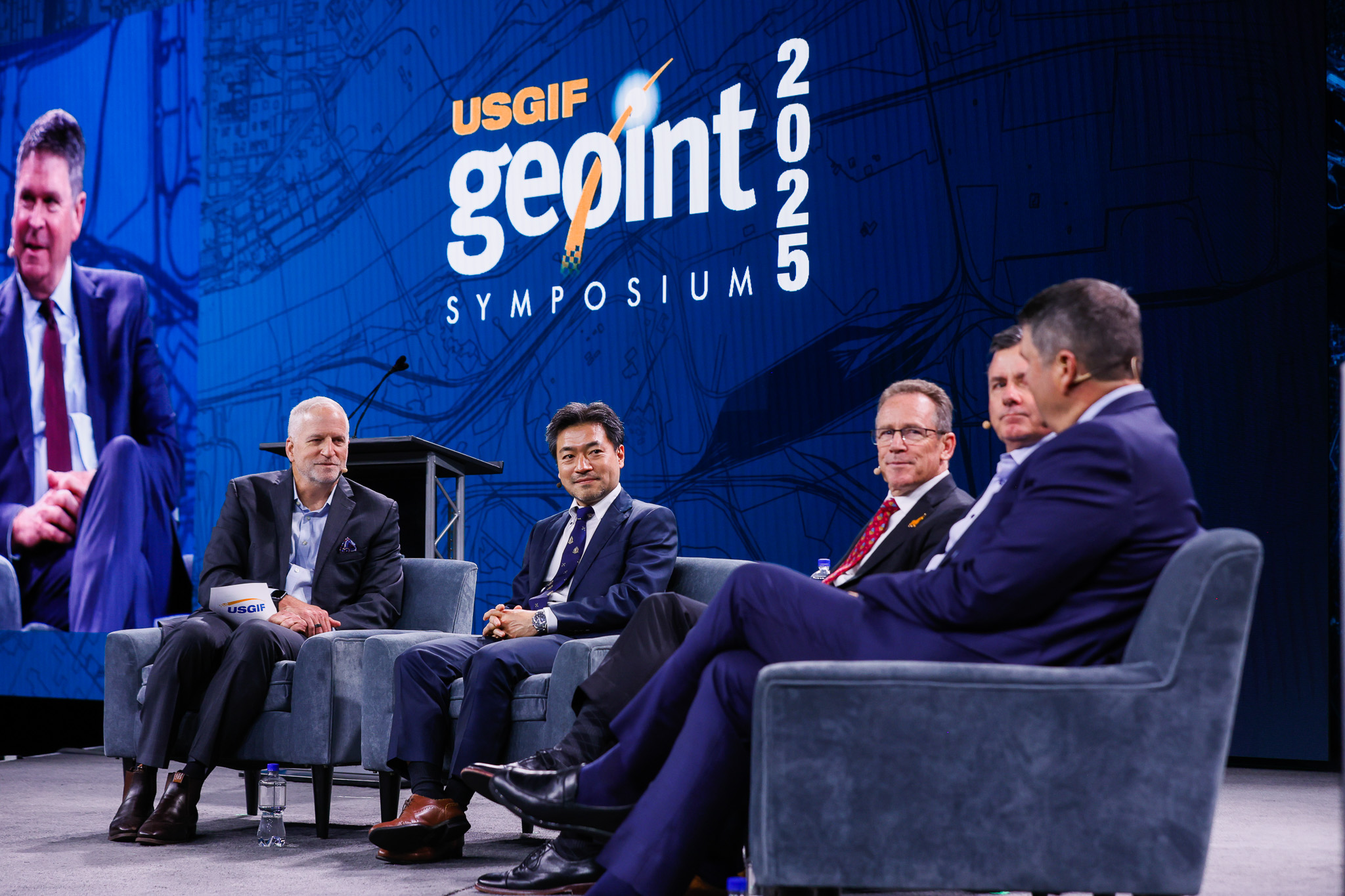
The next panel discussion featured the chief executive officers of four commercial space companies. Led by USGIF Board Chair Cardillo, they discussed how the ever-increasing collaboration among commercial entities and between them and the government is accelerating technological innovation. They further emphasized the role of private sector partnerships in enhancing national and international security.
As Cardillo noted, “the reality is that we’ve got a pacing threat and maybe an outpacing threat concerning space-based capabilities,” particularly regarding China. He asked that each panelist offer “recommendations for our ecosystem, which includes our government partners, and includes national budgetary processes, and includes all the contracting challenges that sometimes we have.”
Moto Arai, Ph.D., the CEO of Synspective, said collaboration between the public and private sectors, as well as alignment among commercial entities, “is going to be very important” to the continued development of GEOINT.
Frank Backes, the CEO of Capella Space, agreed:
“It isn’t just country to country. We’re operating between companies.” Backes added that reliance on government budgets in an era of budget uncertainty is not the best way forward, and that companies need to invest in their own growth by turning to public markets: “We need to be able to handle the surges and the valleys that we see in that budgeting process. And I do believe that the public markets that the U.S. has and that we have access to, really can be a differentiator.”
Brian O’Toole, the CEO of BlackSky, noted that “U.S. companies have a lot to offer to our international partners. And I think because of the increasing investments, a lot of places are building new capacity.”
And Dan Smoot, CEO of Maxar Intelligence, pointed out that opportunities for such collaboration are opening up with new leadership in the U.S. government who “want to leverage industry to advance the capabilities of U.S. defense and intel. And the question is, how do we make sure that they actually can do that?”
GEOINT is Key to Defense, Diplomacy, Innovation
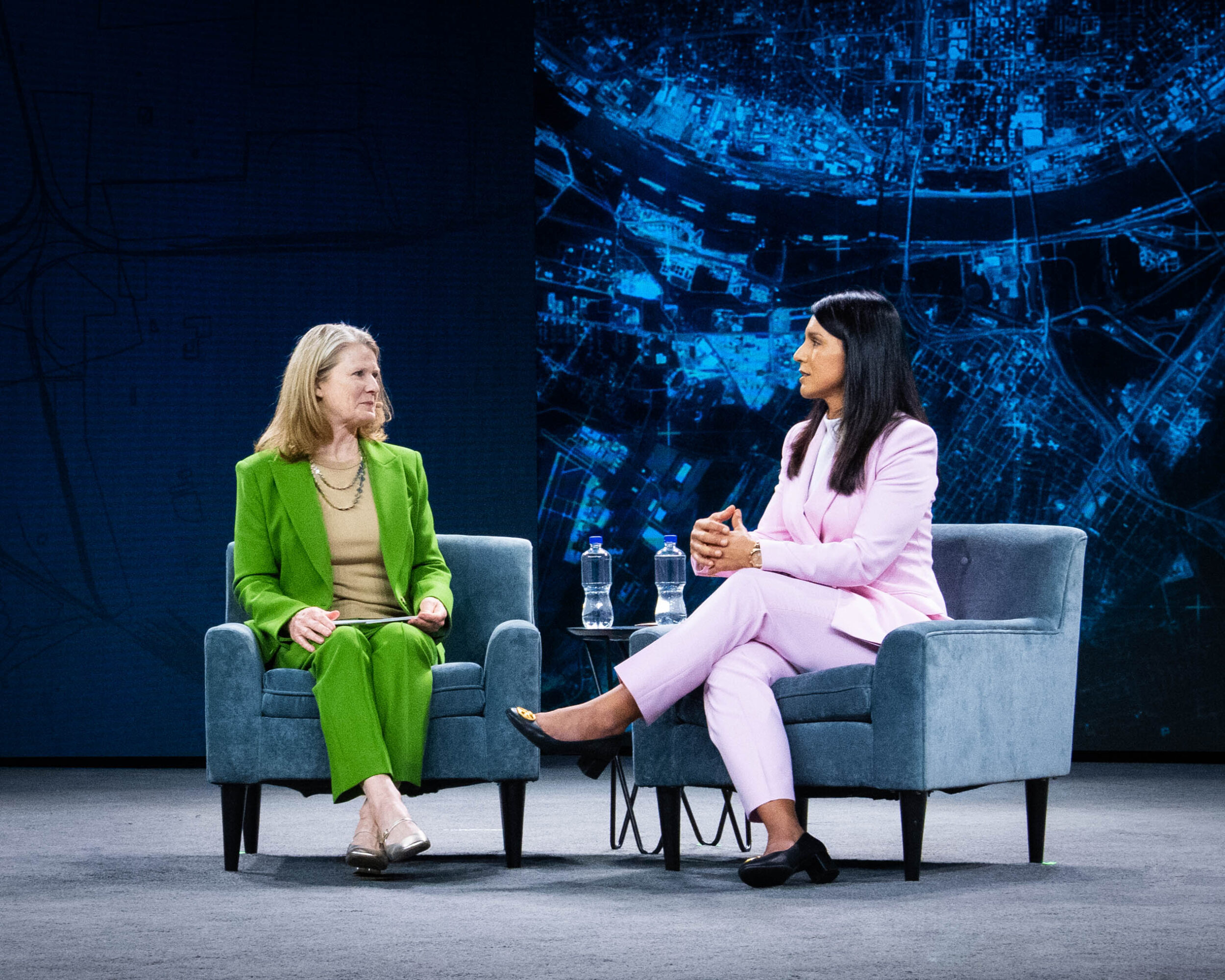
Photo Credit: NGA
Director of National Intelligence Tulsi Gabbard delivered the final keynote. She discussed the indispensable role of GEOINT in preventing and deterring conflict, positioning it as a tool for both strategic defense and diplomatic engagement. And she stressed the importance of maintaining a technological edge and the need for continuous innovation in the face of emerging global threats.
“There is a direct throughline from George Washington surveying the green frontier of wild Appalachia, to pioneers and explorers charting westward paths, to you and your colleagues integrating data and analysis on a distant land — and delivering it to policymakers and our military, at operational speed,” Director Gabbard began.
“We in the Intelligence Community at our best play an important role in ensuring our nation’s leaders are best informed in making decisions,” she noted. “Now we collectively face an array of challenges and opportunities, many of them are being discussed in depth at this Symposium, with innovators joining you with the latest tools and methodologies to support your work.”
Innovation is at the heart of continued U.S. leadership, Director Gabbard said:
“The advancements of America’s innovative and dynamic commercial sector are indispensable to the retention of American dominance in geospatial intelligence.”
Turning to the topic of artificial intelligence, which is at the forefront of this year’s Symposium, Gabbard noted that AI is “transforming nearly every sphere of endeavor. This becomes especially clear when we look at the synthesis between intelligence domains: between human, signals, and geospatial, which when combined can generate awareness well beyond what could be achieved with each pillar in mere isolation — and well beyond what the unaided person, restrained by man-hours and individual expertise, could plausibly achieve.”
The program was rounded out with a fireside chat between Director Gabbard and USGIF CEO Ronda Schrenk that ranged from Gabbard’s lifetime of public service to her efforts to rebuild trust- a key part of her current role leading intelligence integration – and how the GEOINT community can help enhance transparency and build trust.
Related Articles
NGA Director LTG Michele Bredenkamp to Keynote GEOINT Symposium 2026
USGIF is proud to announce that LTG Michele Bredenkamp, newly confirmed Director of the National Geospatial-Intelligence Agency (NGA) will deliver keynote remar…
Registration is Open for GEOINT 2026: Why You Should Attend
The Nation’s Largest Gathering of GEOINT Professionals The GEOINT Symposium brings together more than 4,000 professionals from across the geospatial intelligenc…
Call for USGIF Members to Take the Stage at GEOINT 2026
For the first time, a call is being issued for USGIF members to help shape the agenda of the GEOINT Symposium. All USGIF members can now propose Keynotes, Pane…

